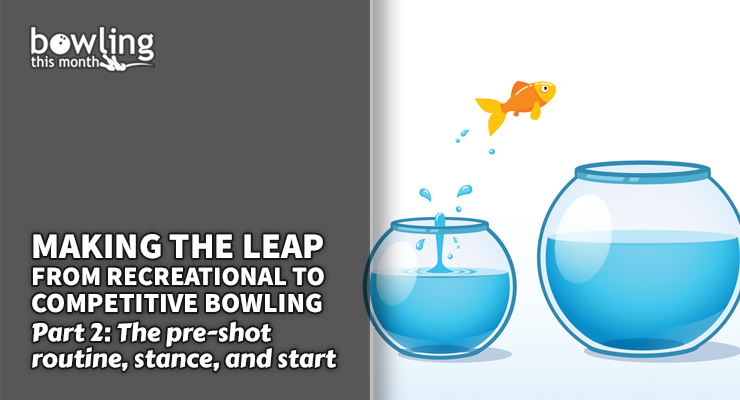In my first installment in this series, I talked a bit about avoiding injuries, presented a brief overview of the evolution of bowling balls, reviewed the advantages and disadvantages of specific ball weights, and presented a good way of determining which weight is best for you. This time, our topics are targeting, your pre-shot routine (with an emphasis on your stance), a suggestion regarding spare conversions, an overview of the four-step approach, and a close look at the all-important pushaway (or ball start) and the first step of that approach.
In these articles, remember that all references pertain to one-handed righthanders who take four steps. I’ll look at five-steppers and two-handers in another article.
Targeting
One of the first things I ask new students working toward becoming Bowlers with a capital B is what their usual targeting method is. What are they trying to hit? An arrow? A dot? For most recreational bowlers, the answer is, “I don’t know.” On the other hand, competitive bowlers always have a specific target or targets on the lane. Let’s look at why that is.
Bowlers don’t knock down pins; that’s a job for the ball. Rather, bowlers should strive to make good shots, rolling their ball to a target that is closer to them than the pins, and letting the ball do the heavy work.
Some bowlers use multiple targets, such as an arrow plus their ball’s breakpoint downlane, but for bowlers transitioning to more competitive play, I’d suggest focusing on either the dots that sit seven feet past the foul line or the arrows about 15 feet down the lane. Whichever of the two you choose, it will be ...
This article is only available to Bowling This Month subscribers. Click below to get instant access to this article and all of our other premium instructional content.
Subscribe to Bowling This Month
Already a Bowling This Month subscriber? Click here to log in.
Image Credits: Leaping goldfish illustration (©iStock.com/IconicBestiary) is licensed for use by BTM and is the copyrighted property of its original creator.
